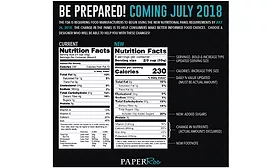Home » Keywords: » packaging regulations
Items Tagged with 'packaging regulations'
ARTICLES
Machinery Technology: Inspection/ Detection
Inspection & Detection: Validation, Monitoring and Verification Processes
These processes are critical to the effectiveness of food safety inspection systems.
March 15, 2018
Never miss the latest news and trends driving the food safety industry
eNewsletter | Website | eMagazine
JOIN TODAY!Copyright ©2025. All Rights Reserved BNP Media.
Design, CMS, Hosting & Web Development :: ePublishing




